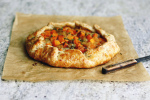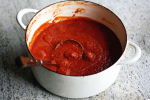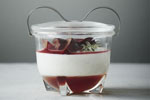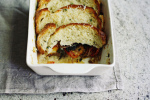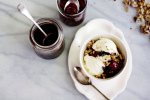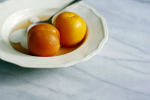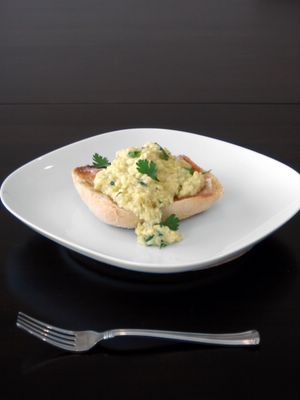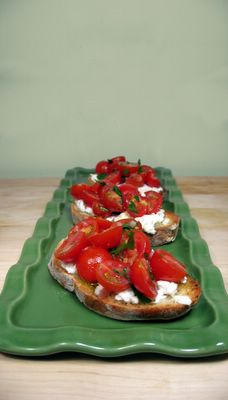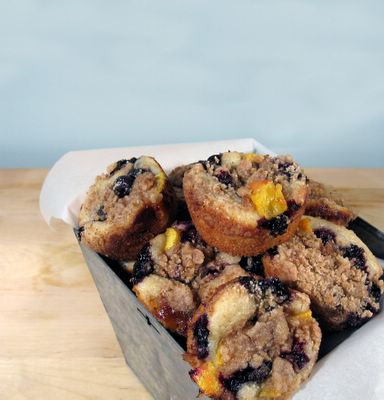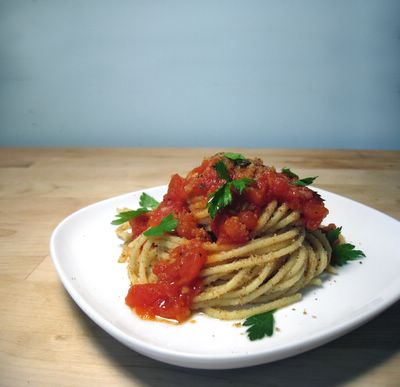A taste of the past
 Monday, September 12, 2005 at 8:39AM
Monday, September 12, 2005 at 8:39AM This is my entry for the "Childhood Memories Meme", fulfilling my obligation to both my dear friend Michele of Oswego Tea and the utterly creative Caryn of the engaging Delicious Delicious.
When I was tagged for this meme, I was surprisingly stumped for ideas. It was not because I was at a loss for material, because goodness knows my love of food started early on in life, but because I realized that I have taken for granted many of the flavours and culinary adventures that brought me to where I am today. In the end, this has been an interesting exercise, forcing me to take stock of those memories — and reminding me of how lucky I have been.
My father’s sandwiches
My father is a man of precision. He is a man that is always busy, always working and puzzling the best way to solve a problem or the next task at had. I have not always appreciated this drive (especially through my lazy teenage years), but the results were never a disappointment – whether it be a dollhouse, or a bridge for our backyard stream or his famous sandwiches. My father’s attention to detail was especially evident in the latter; he is known in our family as the designated sandwich maker, with staunch philosophies on fats (butter or mayonnaise), condiments (we had an armada of mustards in our fridge), proper seasoning (salt and cracked black pepper) not to mention breads, vegetables and accompaniments … the list went on and on, dependent on the time of year and the specific fillings in question. Every layer was pondered over, each addition placed just so, and in an order for optimal blending of flavours. Indeed, the phrase “this is the best sandwich ever” was an often-heard refrain around our house and through our extended family.
My brother and I still carry on his traditions, becoming sandwich-maker designates in our own homes and with our own burgeoning armies of mustard jars in the fridge. A few years ago, I beamed with pride when my father, fresh from the garden where he was working on a new project, sat at my parents’ kitchen table, leaned back and asked “Tara, can you make me a sandwich?”
Scalloped potatoes
I did not discover scalloped potatoes until I was probably around six or so. And when I first ate a spoonful of that creamy, buttery, wonderfully comforting mass, I was immediately lost. To me, they were culinary perfection; studded with chives and with a brown crust on top, this was elegance personified and so much more chic than boring old mashed potatoes. I was in such raptures that I seem to remember eating them for days straight afterwards - sitting with a soup bowl, filled to the brim with scalloped potatoes, a tablespoon in my hand and a grin on my face.
Burger King’s Bacon Double Cheeseburgers
I do not even like Burger King, but as a child this was the holy grail of hamburgers. Having an older brother, I was the typical thorn in his existence who wanted to do what he did, and eat what he ate. Easily swayed by the fanfare of mid-80s advertising, the advent of the Bacon Double Cheeseburger seemed a gastronomic epiphany. My brother, a bacon lover, was allowed to have them on the rare occasions we went out for food. I, on the other hand, was relegated to the children’s meal cheeseburger, which I deemed vastly inferior. In his charity (or I may have stolen a bite) I first tasted the ambrosia that was the grand burger. Ironically enough, my brother is now a vegetarian, and I do not believe I have had one since.
My mother’s stuffing
Growing up, festive occasions meant one thing, and one thing alone – my mother’s potato stuffing. In high school at a friend’s house for Thanksgiving, I was taken aback at the idea of bread stuffing. It had never occurred to me to have a different type of stuffing, because who would want anything other than the crusty, savoury delight of my childhood? With a mix of chunked and mashed potatoes, filled with onions, bacon, liver, and confidently seasoned, it was the highlight of the holiday table, the most coveted of the leftovers. As you may have guessed, I am a big fan of comfort food, and in my mind you cannot get more classic than this.
My grandmother’s scrambled eggs, pictured
It was through my maternal grandmother’s Anglo-Indian background that we were taught the merits of a hearty shepherd’s pie, the wonders of a proper roast with Yorkshire puddings and the melting lusciousness of ghee-soaked chapattis. Thoughts of her food inspire instant nostalgia, and her eggs are no exception. Stirred patiently over a low heat or a double boiler, they are closer to the texture of curdled cream than to their diner counterparts. She swears by the last-minute addition of butter, insisting it ensures a tender result.
My grandmother’s scrambled eggs
Truth be told, I have never measured an ingredient when making these eggs. These are just guidelines, but truly, this is a recipe that falls into the “pinch of this, a splash of that” category.
2 eggs
1/4 – 1/3 cup of milk (or cream, if preferred)
Salt and pepper to taste
2 teaspoons butter, divided
1/4 cup of finely minced onion
2 teaspoons torn cilantro (or parsley, if preferred)
In a bowl, whisk together eggs, milk and salt and pepper. Set aside.
In a medium non-stick frying pan over medium heat melt one teaspoon of butter and sweat onion for about 2-3 minutes, until translucent and soft but without colour. Pour in eggs, swirling pan to distribute evenly. Cook for 30 seconds or so, until edges are starting to set. Using a silicone spatula or wooden spoon, pull edges of cooked egg towards the centre, forming curds. Continue stirring slowly, repeating process until the eggs are starting to set – it will resemble lumpy custard. At this point, beat in remaining 1 teaspoon butter and torn cilantro. Continue to stir, until eggs are almost finished, similar to the texture of a soft ricotta.
Serves 1.
Notes:
• If I'm feel patient, I'll cook over medium-low for more control.
• Snipped chives can also be used in place of the cilantro, or use a mix of whatever herbs you like.
• I adore these eggs on a grilled ciabatta bun (as pictured). The soft interior of the bread the perfect match for the soft eggs, and the crust provides the right amount of chewiness.
As this meme is getting a trifle old, I’m only going to tag three participants – who hopefully are still untagged.
Chubby Hubby
The Domestic Goddess
Delicious Days


